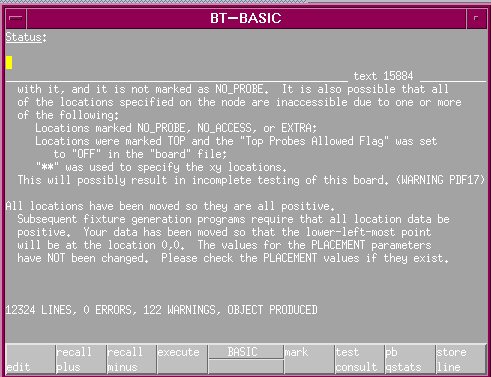
The Interpolation function defined by the point cloud.
#Xy data file converter download#
You can download this file from the link at the end of this blog post. Browse to the point cloud text file, in this example, C:\COMSOL\point_cloud.txt, as shown in the figure below. Creating an Interpolation SurfaceĪs a next step, we add an Interpolation function under Global Definitions and set the Data source to File. The solution is to import the point cloud as an unstructured interpolation surface. In addition, we need to use the assumption that data is on the form z=f(x,y). We need to somehow construct the connectivity data.

It will give us an error message, since we don’t have the connectivity information for the points. We can now try to convert this set of points to a surface by using the operation Convert to Surface. The unit used in this example is meter (m). We can see that there are 958 points extending from 0.5 to 9.5 in both the x– and y directions, and from about -0.2 to +1.5 m in the z direction. The Measure Settings window gives us information about the extent of the point cloud. An easy way to get this information is to right-click the Geometry node and select Measure. For later use, we will need to know the extents of the point cloud. One easy way to visualize point coordinate data is to import it as a table to a Polygon geometry object and then use a Convert to Point operation, as shown in the figures below.Ī visualization of the point cloud data as geometry point objects seen from two different viewing angles.īased on this visualization, we can assume that the point cloud defines a function surface of the form z=f(x,y). Note that data on the form y=f(x,z) or x=f(y,z) would be equally useful after some rearrangements.

If the data is not on that form, we can always try to break it up into several pieces, each on the form z=f(x,y). One such assumption can be that the surface data is of the form z=f(x,y), also known as a function surface.

On the other hand, if all we have is point cloud data without connectivity information, then in order to resolve such ambiguities, we need to make additional assumptions. Would mean that points with indices 15, 17, and 23 are connected as the vertices in a triangle. For example, in a surface triangle data file, a row such as 15 17 23 We then have a list of triangles defined by the connectivity between points, which uniquely defines the surface. If an imported list of 3D coordinates comes with associated triangulated surface connectivity data, such as for the STL, PLY, or 3MF file formats, then this ambiguity is resolved. Are points 5, 6, and 4 connected? In this case they are not connected, which can be seen from the original curve, but not from its relatively sparsely sampled point cloud. Point cloud data may have intrinsic ambiguities. Perhaps 5, 6, and 4 are consecutive points on the curve? However, in the next figure, which corresponds to the curve represented by imported point cloud data, this is not so obvious. From the figure, it is obvious that the points 5, 18, and 7 are consecutive points on the curve. Consider the 2D curve in the figure below. To illustrate the type of ambiguity that may occur, let’s look at a simple 2D example. There are often ambiguities in such a point set, since there is no information about the relationship between the points, also known as connectivity. Once imported, a point is assigned an index according to the line number in the file for its coordinates. Values and indices can be separated by space, comma, semicolon, or tab characters.

In this format, you can use an optional % (percent) character to indicate a comment line. In the software, it is called the Spreadsheet format. This is one of the simplest types of coordinate formats that COMSOL Multiphysics can import. The screenshot below of a text file in Notepad shows the beginning of a point cloud data file with x-, y-, and z-coordinates organized in tab-separated columns. The points typically originate from the surface of a physical object that has been scanned using a laser, metrology tools, radar, etc. In this blog post, we will show how point cloud data can be converted to geometry models that can be used for simulation in the COMSOL Multiphysics® software.Ī point cloud is a set of points in 3D given by x-, y-, and z-coordinates. Sometimes the only data you have available is a set of points, also known as a point cloud. Not all analysis projects start with a CAD model.


 0 kommentar(er)
0 kommentar(er)
